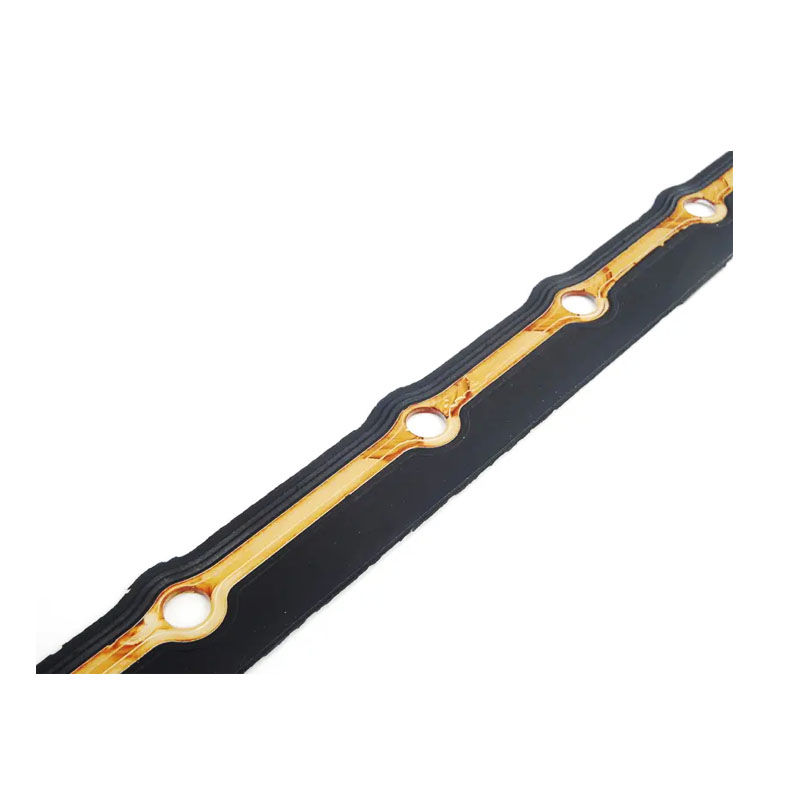Understanding the Function and Importance of Rack and Pinion Oil Seals in Automotive Systems
Understanding Rack and Pinion Oil Seals
In mechanical engineering, the functionality and longevity of machinery is often influenced by the effectiveness of its components, one of which is the oil seal. Among various types of seals, rack and pinion oil seals play a crucial role in ensuring smooth operation in steering systems, robotics, and other machinery. This article delves into the importance, design, function, and applications of rack and pinion oil seals.
What is a Rack and Pinion System?
A rack and pinion system is a type of linear actuator that converts rotational motion into linear motion. The “pinion” is a small gear that engages with a linear rack (a flat bar with teeth). When the pinion rotates, it moves the rack side-to-side or up-and-down, thus allowing for precise control in various mechanical applications such as steering in vehicles, linear motion systems in CNC machines, and other automation equipment. The system operates smoothly when all components are well-lubricated and protected from contaminants, which is where oil seals come into play.
The Role of Oil Seals
Oil seals are designed to contain fluids while preventing contaminants from entering systems where lubrication is critical. In rack and pinion systems, these seals are essential for maintaining proper lubrication of the gearing mechanisms and preventing leaks of hydraulic or lubricating fluids. If an oil seal fails, it can lead to significant operational issues, including overheating, increased wear of components, and ultimately, system failure.
Design Considerations
rack and pinion oil seal

Rack and pinion oil seals are designed with specific parameters in mind. They typically feature rubber or elastomeric materials that provide excellent resistance to wear and chemical exposure. The design may include reinforcing materials to enhance durability, especially in high-load applications. The seal's cross-section is carefully designed to ensure it can be compressed adequately to create a tight fit against the rotating shaft and stationary housing.
Moreover, the seal must also accommodate the dynamic movements of the rack and pinion system. This involves understanding the system's rotational speeds, the operating environment, and the type of lubricants used. Advanced sealing technologies might also incorporate labyrinth designs or secondary seals to enhance their effectiveness.
Applications of Rack and Pinion Oil Seals
The applications of rack and pinion oil seals are broad, encompassing automotive, aerospace, industrial machinery, and even robotics. In automobiles, they are crucial for power steering systems, providing smoother handling and improved responsiveness. In robotic applications, these seals help maintain the efficiency of actuating arms and other moving parts that depend on precision and control.
In industrial contexts, rack and pinion systems often drive conveyor belts and various automated machinery where oil seals prevent fluid leaks, thereby ensuring the longevity and reliability of the system. The seals act as the first line of defense against dirt, dust, and other contaminants, which, if allowed to infiltrate the system, could lead to premature wear and failure of components.
Conclusion
In summary, rack and pinion oil seals are vital components that ensure the efficient operation and longevity of machinery utilizing a rack and pinion system. Their ability to prevent leaks and to keep contaminants at bay cannot be overstated. As technology advances and applications evolve, the design and materials used for these seals will likely continue to improve, offering even greater reliability and performance. Understanding their importance and functionality is key for engineers and designers seeking to create robust and long-lasting mechanical systems.
-
Understanding Automotive Oil Seals: Essential Components for Engine and Shaft Protection
News Jul.30,2025
-
The Importance of Heavy Duty Seals in Industrial and Residential Applications
News Jul.30,2025
-
Exploring Industrial Oil Seals: From Felt Oil Seals to TTO and CFW Solutions
News Jul.30,2025
-
Essential Guide to Oil Seals: From Radial to Metal-Cased Seals for Industrial Reliability
News Jul.30,2025
-
Choosing the Right Oil Seals and Gaskets for Industrial and Automotive Applications
News Jul.30,2025
-
Cassette Seals: Durable Sealing Solutions for Harsh Environments
News Jul.30,2025
-
Understanding the Front Main Engine Seal: Purpose, Maintenance, and Installation
News Jul.29,2025
Products categories















